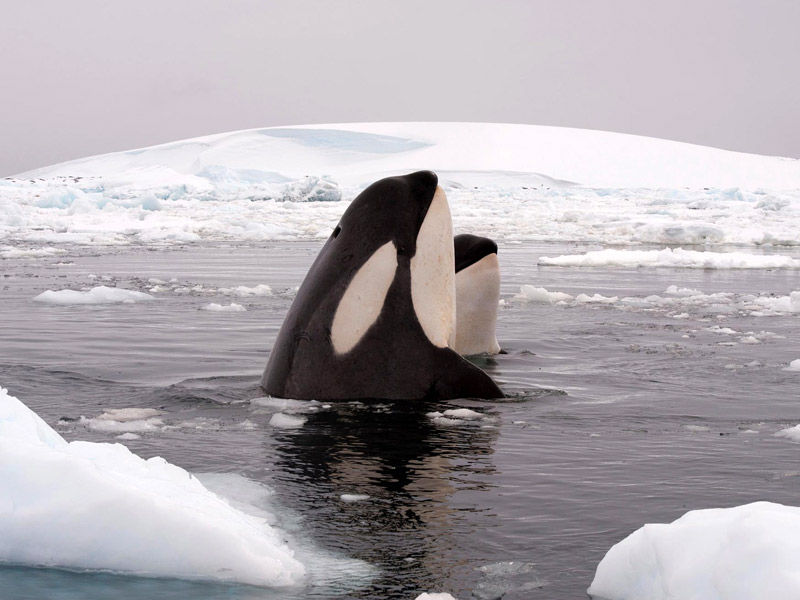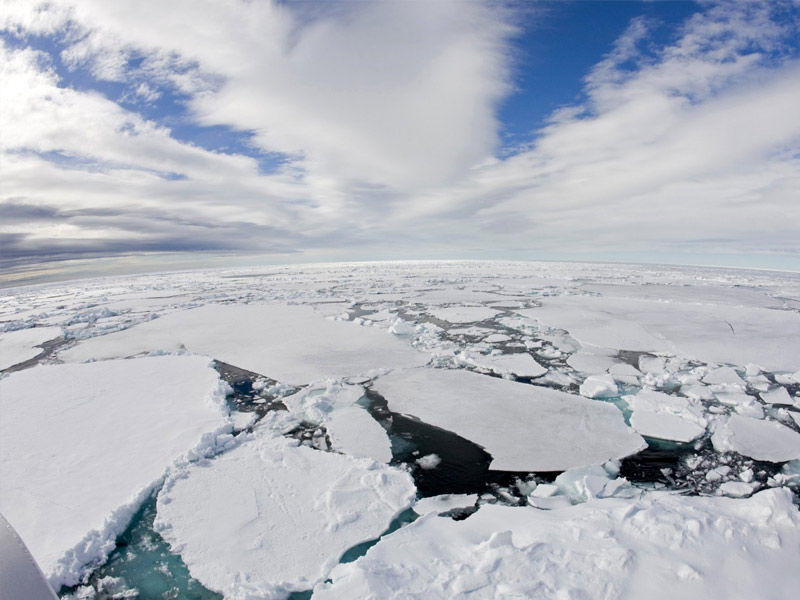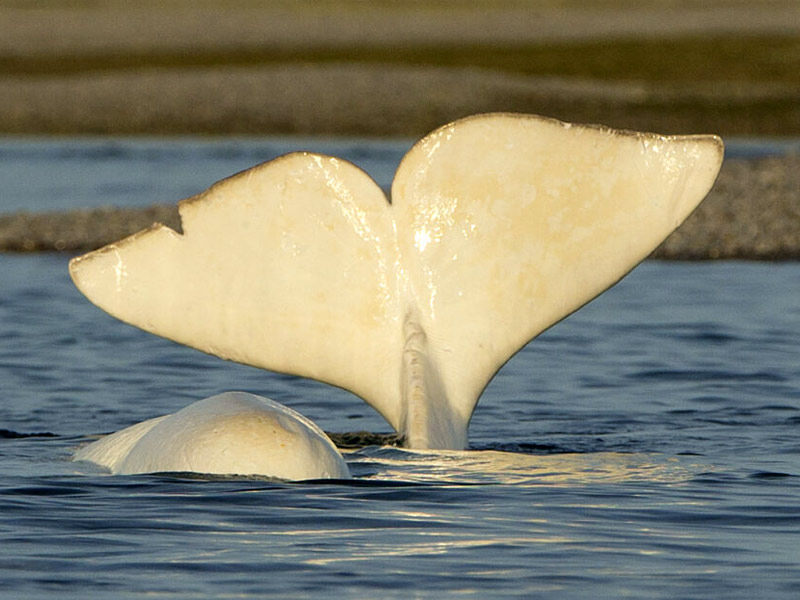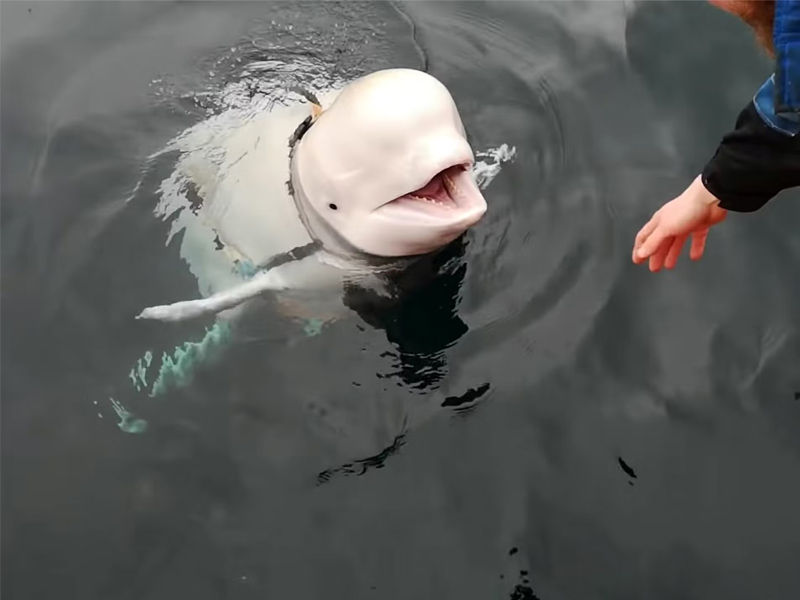Belugas, often known as white whales, are among the most well-known and readily recognizable of all whales thanks to their distinctive hue. Calves are grey or even brown when they are born, and they only turn white around the age of five, when they reach sexual maturity.
White whales are quite small, measuring between 13 and 20 feet in length. They lack a dorsal fin and have rounded foreheads.

Adult belugas are typically almost all white, however, juvenile belugas are grey. The beak is short and broad, and the head region is rounded with a noticeable melon.
A distinctive feature of belugas is their lack of a dorsal fin; instead, they have a slender dorsal ridge. Belugas have broad pectoral flippers, and in mature whales, the flukes develop a significant concavity on the trailing edge.
Male: Male belugas typically grow to be larger than females.
Social Conduct
These whales often live in tiny communities called pods. They are vocal communicators who communicate in a variety of clicks, whistles, and clangs. They are gregarious creatures.
Population Distribution and Movement

Animals caught by Arctic ice frequently perish and become food for polar bears, killer whales, and people living in the region. Native North Americans hunt them, as do commercial fisheries, which have nearly wiped out some populations, such as those in the Gulf of St. Lawrence.
Fish, crustaceans, and worms are the main foods for beluga.
Fun facts
- Denebola brachycephaly from the late Miocene epoch (9–10 million years ago) and Bohaskaia monodontoides from the early Pliocene are two of the beluga’s earliest known separate ancestors (3–5 million years ago).
- The family formerly lived in warmer waters, according to fossil evidence from Baja California and Virginia. The greatest proof that monodontids originally lived in warmer waters comes from a fossil of the monodontid Casatia thermophila, which dates back five million years. The fossil was discovered next to those of tropical species like bull and tiger sharks.
- The fossil record also shows that, very recently, the beluga’s range changed in response to the polar ice packs’ expansion and contraction as the ice ages progressed. The discovery of fossilized beluga bones in Vermont, in the United States, in 1849, 240 kilometers (150 miles) away from the Atlantic Ocean, provides oppositional evidence to this notion.

- These bones weren’t those of any animal ever found in Vermont; they have buried approximately 10 ft (3.0 m) below the surface in thick blue clay. The bones were recognized by experts as beluga bones. Workers digging for the first railroad between Rutland and Burlington in Vermont came across the bones in Charlotte while working on the project.
- The Russian term Belukha, which means “white,” is where the English name “beluga” is derived. White whales are another name for belugas. Beluga calves are often dark grey upon birth.

- As they become older, they gradually become lighter, and when they’re fully grown, they develop the white coloring that adult belugas have. Because of their white coloring, belugas may hide from predators in the icebergs and ice floes of northern seas.
- Beluga whales are a highly sociable and very loud species. Due to the avian-like noises that beluga whales produce, mariners and scientists have referred to them as “sea canaries” for a very long time.

- Beluga whales have a low dorsal ridge but no dorsal fins. Less surface area can be used to lose heat to the environment because there is no dorsal fin. A beluga may also more easily swim beneath large ice sheets and find breathing holes without a dorsal fin.
- One of the few whale species with unfused cervical neck vertebrae is the beluga. They have highly flexible necks as a result of this, and their heads may move in all directions.

- Unlike the majority of other whales, belugas can swim backward as well as forward.
Visit the Beluga Whale Info Book for additional details about belugas.
Conservation and Ecology
There are numerous environmental dangers to beluga whales. High concentrations of PCBs, heavy metals and other contaminants have been found in the water of the St. Lawrence River as a result of industrial runoff.

The poisons accumulate in the bodies of huge carnivores after entering the food chain through single-celled creatures. These poisons may be responsible for several beluga deaths and strandings. The 1972 U.S. Marine Mammal Protection Act protects beluga whales along with other marine animals.





























